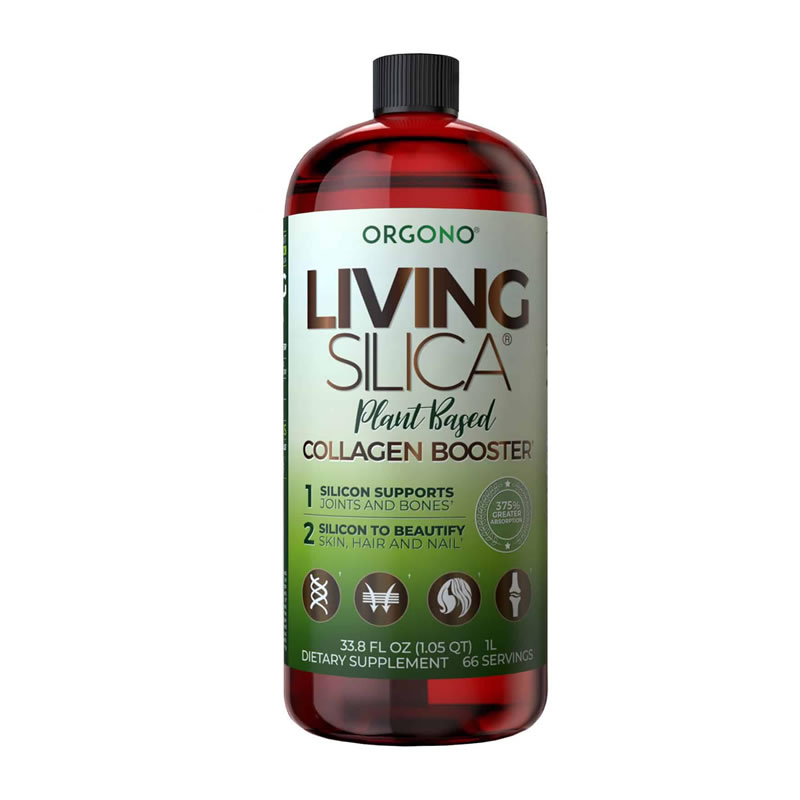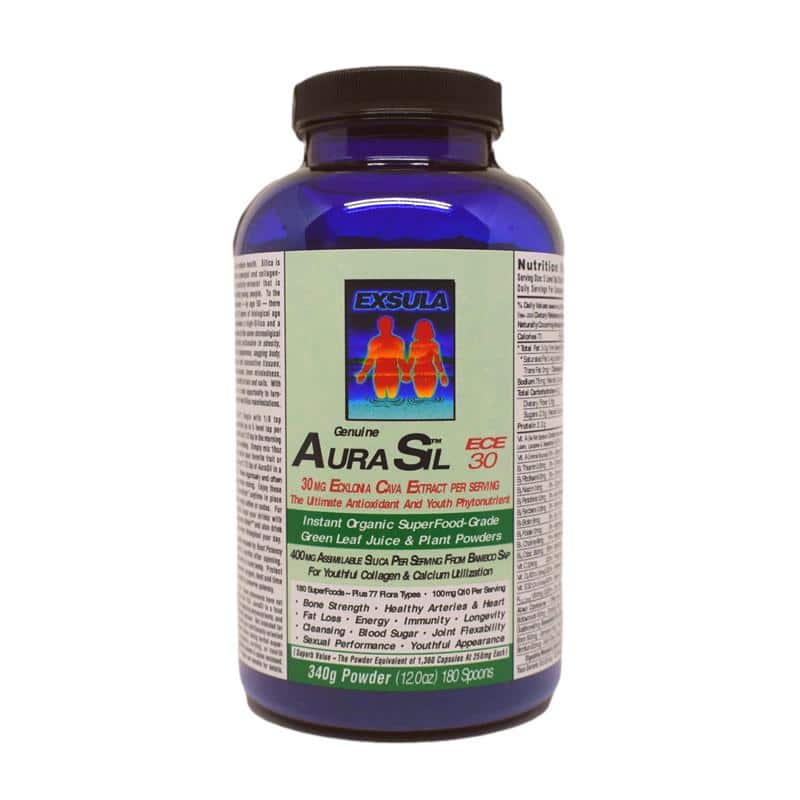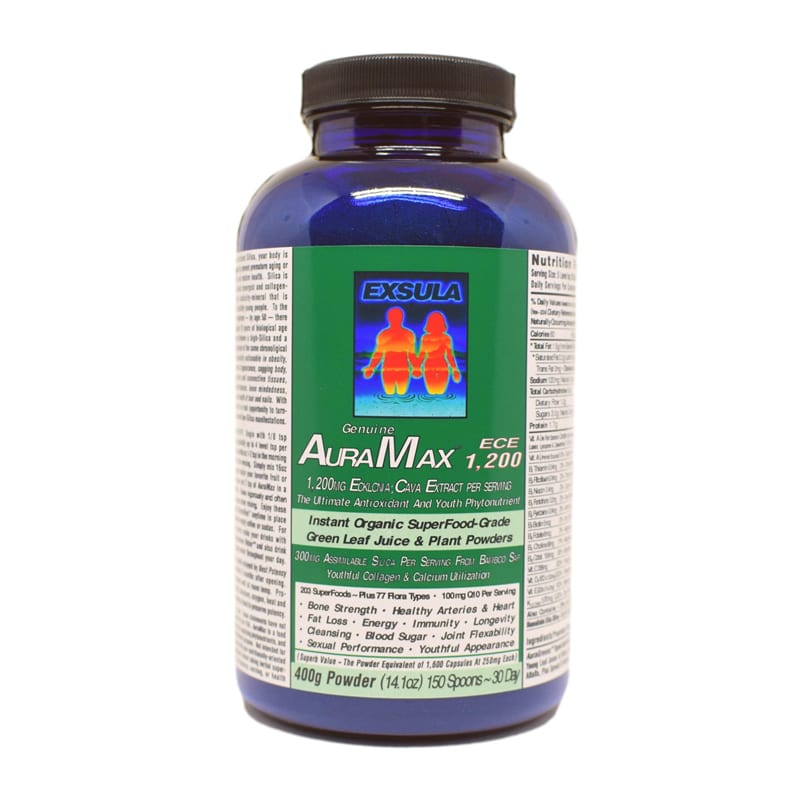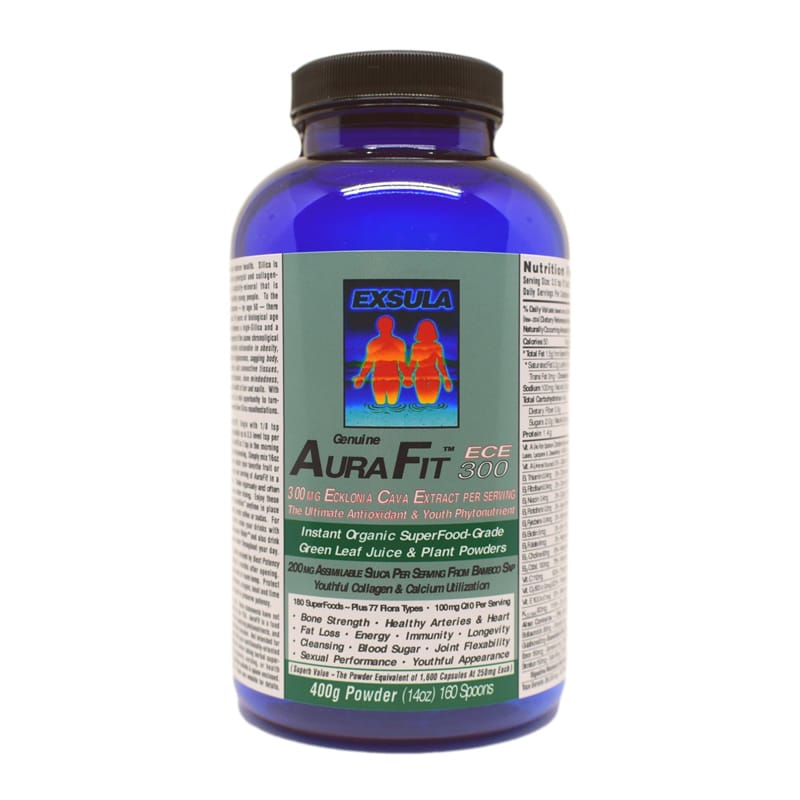No products in the cart.
Podcast: Play in new window | Download
Subscribe: Apple Podcasts | Google Podcasts | Amazon Music | Email | RSS
Podcast 355: Living Silica Collagen Booster
Collagen is found in nearly every structural element of the human body. It holds us together. Every tissue is made out of a collagenous network with different types of cells attached to it. Our body’s ability to restore connective tissues slowly begins to diminish around the age of 25, and as we age, our bones and joints become more fragile and brittle. Broken hips are very common among elderly people, not because they fall more often, but because when they fall, their weakened bones and joints tend to break more easily. You see children fall from the branches of a tree or scrape their knees all the time, but one relatively benign slip-and-fall accident does a lot of damage to their grandparent’s bones. We can’t turn back time, but we can certainly help our bodies to obtain the essential ingredients that will allow them to heal themselves for many years to come. One of the best ways to support our connective tissue health is by supplementing with silicon (don’t confuse with silicone, a polymer commonly used as a sealant, lubricant, or adhesive), a mineral that helps our bodies with the process of collagen restoration. Listen to Martin and Scott as they discuss collagen, silica and the fascinating science of biological transmutations!
Additional information:
Biological Transmutations
Collagen and Gelatin
Silica for Arthritis: Loic LeRibault’s Resistance
How to Bend a Chicken Bone – an experiment mentioned in the podcast
Also be sure to check our FREE Chronic Pain Manifesto!
You can watch this podcast episode as a video, listen to an audio version only, or read a full transcript below! Enjoy this episode and share your questions, ideas, and experiences in the comments below! Have you tried silica? Are you supplementing with collagen? We would love to hear from you!
Scott: “Welcome everybody! This is the Life Enthusiast online radio and TV network, restoring vitality to you and the planet! I’m your co-host Scott Paton, and joining us as usual is Martin Pytela, health coach at Life Enthusiast. Hey Martin, how are you doing today?”
Martin: “Doing good! Hope you are also!”
Scott: “I am! Although, I have to tell you that now that I’m in my sixties, my knees just are not the same as they were in my twenties, and I’m just thinking: surely there must be something that we can do, those of us whose joints aren’t quite working the way that they used to work…”
Martin: “Scott, I wish that I had you closer to me, because you are far away in a country to which shipping is a pain in the neck.”
Scott: “I’m in Medellin in Colombia, right now!”
Martin: “If you were closer, I would send you some of this wonderful product. There is a new product being introduced to the market. It is the double concentrated, G5 Orgono Silica Collagen Booster.”
Scott: “In our joints we have basically worn away the collagen.”
Martin: “The cartilage, which is the buffering tissue between the bones, is thinning out because it’s losing its viscosity. It needs to be restored, rebuilt.”
Scott: “Is this kind of like… when you were talking, I was as actually thinking of a sink and the tap, and of course, when you turn the tap on, the water runs, and when you turn it off, the water stops, but sometimes it leaks and it drips, and if you take it apart, you find this rubber ring that is basically worn away, and that’s what causes the water to leak, it’s like a seal that stops the water, so the rubber ring needs to be replaced.”
Martin: “Right, because in your tap you have gotten to metal-on-metal, and metal-on-metal is not a nice fit. You need this buffering piece of rubber that’s going to actually fill all the gaps and seal the leaking spaces.”
Scott: “So, in the shoulder, or in the knee or the hip, we’ve got this rubber ring that’s basically worn out. What a medical practitioner will probably tell you is that you need a new hip or a new knee, we’re going to have surgery, we are going to stick a whole new thing in there, when really all you need is some way to build back up that rubber ring.”
Martin: “Right, they call it bone-on-bone. You have two pieces of the bone meeting instead of being buffered. Imagine my two fists bumping into each other. If I reach out here, take this piece of cork and place it between my fists, you can see the idea, there is something in between, it’s going to work better. So here I have something thicker that’s got even some padding, I’m going to do even better. There’s cushioning. When you put weight on it, it doesn’t actually hit [bone on bone], that’s the main point. Now, the physiological issues: hyaluronic acid is the material that causes these joints to swell, and silica is the mineral that helps us build new collagen. Collagen is actually the tissue that holds everything together.
Collagen is the structural element of the human body. If you think of connective tissue, let’s just say, my liver. My liver is a matrix of collagen, upon which liver tissues are strung and hung. My skin is again a collagenous structure with some extra epithelial tissues added to it. So even my bone, every bone is a connective tissue structure that’s soft and pliable, upon which the mineralization is anchored. In fact, we could show an experiment! If we took a chicken bone and put it into vinegar, it will dissolve all off the calcium away, and what’s left is this pliable, flexible rubbery thing that’s in the shape of the bone, just soft and flexible, and that is the collagen, and that is what the silica is building.”
Scott: “So you had mentioned G5, what is G5?”
Martin: “G5 is a name, I think it is Generation 5, a name added by Loic Le Ribault, a French inventor who actually came up with this organic silica, and it’s monomethylsilanetriol (MMST). Monomethyl means that there is one methyl (CH3), silane means that there’s a silica at the center of it in, triol means that there are three OH or hydroxyl groups attached to it.
Chemically speaking, silica is SiO2, beach sand quartz, that is totally unusable by a human body. We don’t know what to do with it, it just passes through us as a filler. But once it is methylated, once it is attached to something that’s organic, such is the methyl, and the alcohol, the OH group, the hydroxyls, all of a sudden it becomes absorbable. So this clever man has turned beach sand, an inorganic unusable material, that only plants can turn into something useful, into an organic compound, that is absorbable in the human body and structurally usable.”
Scott: “So what you’re basically saying with the silica is that every part of our body uses it, and as we age, we’re not getting enough of it to replace what we’re wearing out.”
Martin: “Yes! Collagen is involved in hair, nails, skin, these are the most visible bits. So if you have abundant hair, you probably have abundant collagen. If your nails are hard and yet pliable, not brittle, you probably have the right amount of mineralization in your body. If you are suffering with inflammation in the joints, you probably have some kind of deficiency.”
Scott: “And silica is a major part of the deficiency.”
Martin: “Yes, and here’s the tragic part. The RDA, recommended daily allowance standards that have been established by the FDA, do not include silica, they didn’t even bother measuring whether there is or isn’t a need for silica in the human body. Silica, the element, we need about 40mg of it a day or we should say that we lose about 40mg of it every day and we need to replenish it. And we do replenish it; it is in all kinds of plants, it’s richly present in horsetail, in oat straw, well actually in all structural elements of plants. We just don’t get enough of it.”
Scott: “Well, I’m thinking as you mentioned those two plants, I don’t eat those, I don’t think I’ve ever eaten those two plants. If I’m having lettuce, is it in the lettuce? Or in a carrot or a potato?”
Martin: “It is there, but there’s not enough of it. If there was enough of it, you would be experiencing none of the wearing out of the physical structures, such as you are reporting your knees not being like they used to be or your hair isn’t as thick and wavy as it once was.”
Scott: “So basically, what you’re saying is that I could be eating lots of organic fruits and vegetables, but those organic fruits and vegetables aren’t necessarily supplying me with as much silica as I would need?”
Martin: “Correct. It is hard to keep up with it. So if we are showing these signs of aging, this wearing out of body parts, this stiffening and pain we would probably do better with more silica. Let’s quote some stories – there are stories from athletes, there stories from ordinary people that have used this product. Let’s put up a link to the Loic LeRibault page, that we have on the Life Enthusiast website. There is this guy, an aging athlete, who developed tendinitis, his achilles tendon is hurting like mad. He’s having pain walking, running, accelerating… just terrible. He gets the G5, he soaks a piece of cloth in it and wraps it around his ankles, and goes to sleep. He does it three times, goes running, and runs without pain. After six weeks of these treatments, he runs better now than he did five years ago. Or another story, an old soldier with chronic pain in his back, on opioids, can’t sleep because of the pain, waking up three times every night because of a positional intolerance, gets his hands on this product, drinks it for a few days, then sleeps like a baby.”
Scott: “So how much should someone take?”
Martin: “The bottle of the Collagen Booster is a one liter bottle, which is 34oz, and it is enough for one month supply of an intense program, or two months of maintenance.”
Scott: “So it would be like a tablespoon in the morning, and a tablespoon at night?”
Martin: “Sounds about right. Or just one tablespoon a day if you’re going to take it slow.”
Scott: “If you take a little bit too much, would you experience anything?”
Martin: “This thing is totally innocent, it will do nothing dangerous. The only thing you might notice is that you will have more flexibility, resilience, your hair will start growing faster, so I guess that would be annoying, because you’ll have to go see your barber more often.”
Scott: “But when you’re in my stage with my hair, if it’s growing faster and there’s more of it, I’m happy, so…”
Martin: “Well, as soon as you’re back, we’re going to get you a couple of bottles and we can test it on you.”
Scott: “Okay, I will let everybody know what the results are.”
Martin: “I’d like to point out some interesting theories, that have not made it into the mainstream. These are the theories around biological transmutations, put together by Louis Kervran, another French scientist. He has actually very carefully worked out the equations, We had a interview with Ken Campbell a while back, when we were discussing these different biological transmutation equations. But the basics of it are, that you can take one or two elements such as a combination of two carbons, and turn them into something else, like silicon. Or you can, for example, take calcium plus oxygen, and it will make silicon. Magnesium plus oxygen will make calcium. There are these transmutations, that happen inside of a living creature, that scientists say are impossible, they say it can only be done in a plasma reactor in a complicated way. This is a process called protonization, where we change the number of protons in an atom, and it changes the element from one to the other.”
Scott: “And normally you need this big atomic thing blasting huge energy in order to do it. [Quoting from X document]: In 1799, the French chemist Vauquelin became intrigued by the quantity of lime which hens excrete every day. He isolated a hen and fed it a pound of oats which were analyzed for lime (CaO). Vauquelin analyzed the eggs and feces and found five times more Ca was excreted than was consumed. He concluded that lime had been created, but could not figure out how it happened.”
Martin: “That’s right. The chicken he was studying was excreting more calcium that it was ingesting. Hence, what’s going on?”
Scott: “In 1831, Choubard germinated watercress seeds in clean glass vessels and showed that the sprouts contained minerals which did not previously exist in the seeds. So where did the minerals come from?”
Martin: “Exactly. Again, protonization. Nature in action. Like, you cannot invent something out of nothing, and yet, there it is. The direct evidence is there. And the funny thing is, that the western science as we know it is willfully ignoring these discoveries. This information is right there, in the books, on the record, and we are pretending as if that never happened.”
Scott: “So this is not new! I’m talking about science that is from 1799! So in 1844, Vogel also found further evidence of biological transmutation. He sprouted seeds of cress in crushed glass deprived of sulfate or of any other sulfurous compound, he watered them with distilled water, covered them with a glass cloche and analyzed the air of the room, so as to determine the sulfur… A few months later, the adult plants with ripe seeds, were dried and burnt with a mixture of potassium nitrate and potassium carbonate; the result was that a quantity of sulfuric acid double that which was contained in the seeds was produced. These experiments demonstrate that either sulfur is not a simple element or that the source which produced the sulfur has remained unknown, despite all the care which had been taken to discover it.”
Martin: “Right, and when we look at the Kervran equations, we will see that sulfur is made from a combination of other elements, so let’s take a look at that, what that actually is.”
Scott: “All transmutations proposed by Kervran have two traits in common: (1) The initial and final nuclei differ by the addition or subtraction of a piece of matter, e.g., a proton (a hydrogen nucleus…), an alpha particle (a helium nucleus), a nucleus of oxygen or one of its isotopes, or perhaps some other familiar nuclei; (2) There is an energy excess or deficit in the order of 0.01 atomic mass units (a.m.u.)… or 20 electron masses, or 10 MeV, or 1.6 x 10-12 joules. The mass equivalent of this energy gap is of course needed in order to have the Lavoisier principle safe… This energy gap is very much larger than those occurring in chemical reactions. For example, if … hens are indeed transmuting potassium into calcium (which is an exo-energetic reaction), the power they are radiating is so huge that it would, if in the luminous (electromagnetic) form, set everything on fire all around!”
Martin: “Yeah, there’s either energy out, or energy in, depending on which direction this transaction is going. So the sulfur for example, sulfur has an atomic weight of 32, oxygen has an atomic weight of 16. Take two oxygens, 16+16, put it together and there’s your sulfur! Now, the interesting bit is the calcium because, that goes back to the bones. When we want to build healthy human bones, we can do that either through the magnesium path, or through the silica path. So Si, silica, number 28, plus carbon, number 12, 28+12=40, which is the weight of calcium! So combine silica and carbon, get them together, there’s your calcium! The other pathway there is magnesium and oxygen, magnesium is 24, oxygen is 16, add those two together, there’s your calcium.
Funny thing! Horses, race horses, when they run, when they have the high demand for oxygen that they need for this high output of energy, they are actually dissolving their bones, stealing the oxygen for oxygenation, for energy production, and leaving magnesium in their circulation, in their blood, in their fluids. And then when the race is over, and they are put out to calm down, they breathe the oxygen of the atmosphere, they reconnect the magnesium that they have produced with the oxygen, and put it back in the storage as calcium, back in their bones. And the other pathway that you talked about is the potassium and hydrogen. Potassium is 39, so hydrogen is 1. So add one potassium to one hydrogen and there’s your calcium, again. So it is highly possible that our bones are a storage site for energy or for oxygen, or for whatever elements we may need.”
Scott: “The other thing that kind of comes to mind as I’m listening to this is, if we need calcium in our bones and we’re low on calcium, drinking milk, which they say is high in calcium, might not be the right answer!”
Martin: “That’s correct! The right answer might be drink some Silica Collagen Booster. Actually, there are 7 different isotopes of calcium. A different isotope of calcium for the bone in your body, for the hard part of the teeth, each one of these is actually made from a different isotope of calcium. By isotope we mean different number of neutrons in the atom. The number of protons dictates which element it is, but the number of neutrons dictates which subset or sub-species of that atom it is. This gets complicated! Life is infinitely more complicated than the simplistic proclamations from the marketers. And here we are, marketers, trying to confuse people with complexities, huh? Wouldn’t it be nice if I could just tell you: Hey, if you want to have healthier bones, ingest silica, or silicon in a carbon organic compound, because that way you’re going to be building more of the connective tissue, the collagen, which means that you will have healthier hair, skin, nails, bones, cartilage in the joints. Now that’s a big deal!”
Scott: “If you have arthritis in the joints, if you have brittle fingernails, if your hair is not thick, if your skin is droopy, if when you walk you can feel your joints moving around, then you need silica.”
Martin: “And if your doctor tells you that the x-rays show that your discs are collapsing, or that the vertebrae are losing their mass and volume… which is very common for older people! You know how people tend to lose their height the older they get? What that means is they’re actually losing the integrity of these bone and disc structures. So I would say that it’s imperative, that to keep healthy function, the physical part of our body healthily functioning, we need to resupply and replenish silicon in an organic compound, not as beach sand.”
Scott: “So, Martin, if someone wanted to know more or they wanted to maybe get the silica to try it out, what should they do?”
Martin: “Come to our site, www.life-enthusiast.com! If you want some direct answers, call me at (866) 543-3388!”
Scott: “Thank you, Martin, for sharing this amazing information! Thank you, everyone, for joining us! We really appreciate you, and you’ve been watching or listening to the Life Enthusiast online radio and TV network, restoring vitality to you and the planet! See you next time everybody, bye bye!”








